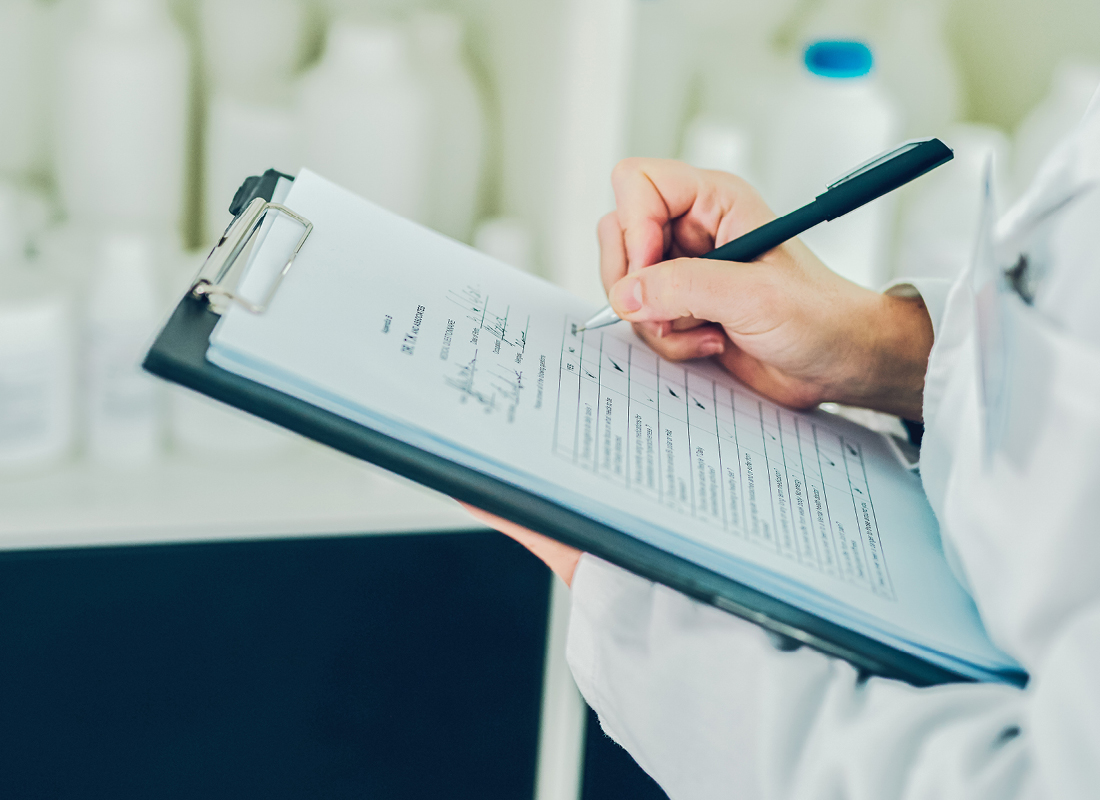Many years ago, a woman purchased a cup of coffee in a restaurant drive-through. Not having a cup holder available in her car, she placed the cup between her legs to hold the coffee while she reached for money to pay for it. She burned her legs, sued the restaurant, and actually won her court case.
Now such restaurants are required to warn customers with signs stating the obvious; “coffee served hot.” Before this regulation came to be, however, many people were aware of the possible danger of placing a hot cup near their skin. Does having a posted sign make customers safer? What about in a medical environment? There isn’t an explicit safety regulation written for every action that could create an unsafe situation. So, what are a few of the hidden and maybe no-so-obvious things might your staff need to know in order to keep safe while performing lab testing?
[freereport]
You can’t chew gum in the laboratory. It’s true, but sadly, it had not written down anywhere as a regulation. OSHA’s Bloodborne Pathogen standard says that “eating, drinking, smoking, applying cosmetics or lip balm, and handling contact lenses are prohibited (in the lab).” It says nothing about gum, throat lozenges, hard candy, or even chewing tobacco. The unwritten rule is that OSHA is trying to prevent hand-to-face contact while working in an area where infections can be acquired easily this way. There are multiple routes of entry via mucous membranes—a major source of pathogen exposure—your mouth, nose, and eyes. Laboratorians should always keep their hands away from their face when working in the department. These activities are just another opportunity for hand-to-mouth contact. While you might be able to show the safety officer you are putting these things in your mouth outside of the lab, you would not be able to prove that to an inspector, and they will rightly cite you for it. If you need help enforcing this, and you work in a CAP-accredited laboratory, there is now a specific regulation that prohibits gum chewing directly.
How long should staff wear PPE? During the COVID-19 pandemic, many have asked about the effectiveness of various PPE and have looked for written guidance discussing how long it should be worn. In general, studies show that gloves lose barrier effectiveness in about two hours. Wear them that long if they are not visibly soiled while in use in the lab. Lab coats— disposable or reusable—can be worn for one week in the general lab setting unless something is spilled on them. Once a new coat is worn, the outside is considered contaminated, but that does not mean it cannot be re-used. It is wasteful to change coats every day unless there is a reason to do that (i.e. in a specialty lab where cross-contamination will be an issue). Face shields worn by staff can be reused as well, and they can be cleaned with alcohol-based products for disinfection. Rarely should a wearable face shield or goggles be used only once before disposal.
Mesh shoes are not allowed to be worn by lab personnel. Again, other than in CLSI guidelines, it will be difficult to find that written clearly in lab safety regulations. Laboratory footwear should “be comfortable and cover the entire foot, including the instep and the heel. Because canvas shoes will absorb chemicals or infectious fluids, they are not recommended. Leather or a synthetic, fluid-impermeable material is suggested.”
OSHA’s PPE standard does insist that employers take measures to protect the feet of employees. In the healthcare setting, that means footwear needs to protect from biohazard materials, chemicals, and even sharps. Mesh or canvas shoes do not fit the bill, and neither do clog-style shoes (even if they have a heel strap). If you need to, set your department’s footwear policy through the dress code or maybe the Chemical Hygiene Plan. If staff tells you they can’t find this type of footwear, tell them to look harder. All across this country, hundreds of healthcare employees are wearing the appropriate shoes, and they are available at several different stores or on line.
Often, because these safety rules are “unwritten,” staff will challenge you on them. It can be difficult to try to enforce these important safety measures if you can’t properly educate the staff about why they exist. Be sure to know your regulatory resources, and don’t be afraid to dig deeply into the references to find the answers you seek. Lab leaders can write their own policy, and it can go above and beyond what the regulations state if needed. The safety standard may not be clear and direct, but it these are still important measures to take. Just like that lady may have needed a sign to prevent her from putting hot coffee in her lap, your staff needs clear safety guidance to keep them safe from a healthcare-acquired injury or exposure. Provide the tools they need to remain happy and healthy members of your team.
